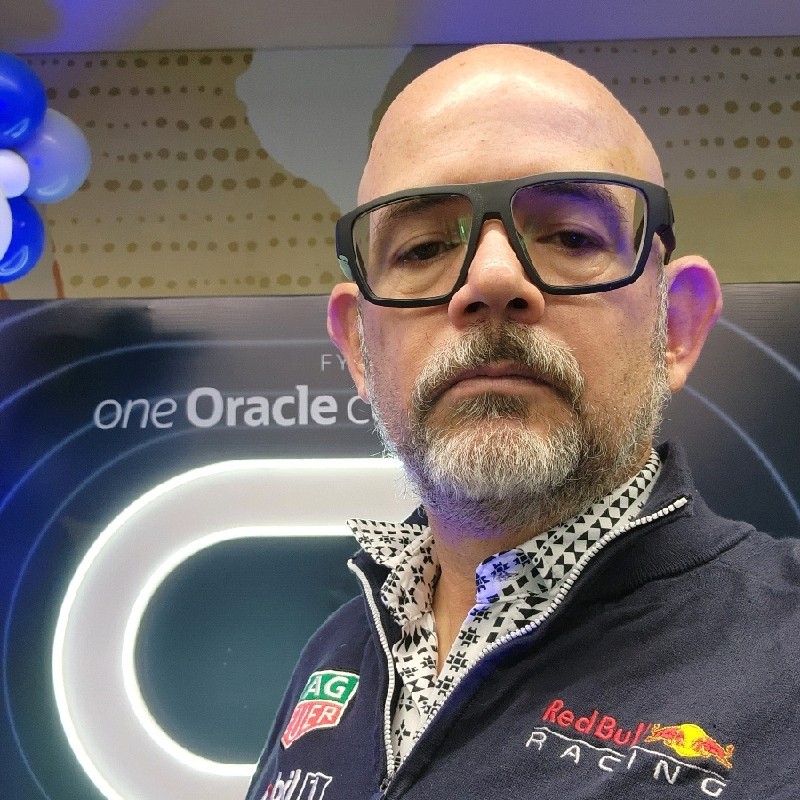FinOps for Data Center: Structuring Data Center Cost and Usage Data
This Paper is Part 3 of a FinOps for Data Center series outlining how applying FinOps Principles—focused on operational expenditure (OpEx), detailed cost attribution, and FinOps Framework Capability-driven practices—enables organizations to align Data Center investment with business value. By providing timely, accurate financial insights, FinOps empowers executive leadership to make increasingly-informed executive decisions.
The FinOps for Data Center Series
- Part 1: FinOps for Data Center – Context for Creating a FinOps Practice Profile
- Part 2: FinOps for Data Center – Applying the FinOps Framework
- Part 3: FOCUS™ for Data Center – Structuring Data Center Cost and Usage Data (You are here)
- Part 4: FinOps for Data Center – FinOps Tooling Considerations
Why FinOps for Data Center
The Data Center is evolving from a passive cost center to a key enabler of business performance. FinOps provides a framework that allows organizations to:
- Integrate financial oversight into strategic infrastructure planning.
- Unify financial and operational visibility across multiple platforms.
- Enable better decisions on multi-year planning, investments, risk, and scaling by executive stakeholders.
By adopting FinOps, organizations can shift from fragmented infrastructure reporting to a comprehensive, data-informed model that aligns cost transparency with strategic goals.
FinOps for Data Center
This document provides high-level, vendor-agnostic FinOps guidance for Data Centers, outlining the scope of FinOps practitioners’ roles, the application of the FinOps Framework, and relevant theoretical and practical considerations. While FOCUS is referenced, detailed data-level information will be addressed separately.
Who Should Read this Paper
This paper applies to FinOps practitioners who have been asked to manage technology spending that extends FinOps concepts beyond the scope of public cloud into Data Centers. Links to relevant material are contained in the Related FinOps Material section of the paper.
Prerequisites
An existing understanding of the FinOps Framework Domains and Capabilities for public cloud, along with being familiar with the content and concepts in Part 1: FinOps for Data Center – Context for Creating a FinOps Practice Profile, and Part 2: FinOps for Data Center – Applying the FinOps Framework.
Introduction and Purpose
A FinOps Scope refers to a segment of technology-related spending where FinOps Practitioners apply FinOps concepts. FinOps Scopes extend the Framework’s operating model to encompass intersecting areas of technology spend, particularly as the practice evolves to include activities in addition to public cloud.
According to the State of FinOps 2025 survey, 22% of practitioners are currently engaged in managing Data Center costs, with expectations rising to 36% by 2026—a 14% increase. These trends suggest that FinOps is increasingly being applied to broader areas of technology spending beyond public cloud services.
By collaborating with Core and Allied Personas, FinOps Practitioners may help shift organizational culture away from traditional finance, procurement, and technology silos toward a more integrated, data-driven approach that supports planning, cost analytics, and optimization.
The purpose of this paper is to explore the FinOps Scope for Data Center and to support existing FinOps Practitioners in understanding this area and the application of the FinOps Framework.
Data Center Definition & Characteristics
In the context of FinOps Scopes, “Data Center” is a broad term used to describe non-cloud IT services delivered from facilities either directly owned or managed by the client through contractual or service agreements. The Data Center scope includes all technology-related spending and decision-making activities associated with planning, acquiring, operating, and optimizing the physical and virtual infrastructure that supports an organization’s technology needs.
Read more about how a Data Center is defined for the purposes of this FinOps for Data Center series, the characteristics and special considerations related to private clouds — including approaches for the Data Center scope that could support the enhancement of traditional infrastructure management by applying FinOps principles to fixed-cost assets – in Part 1: FinOps for Data Center – Context for Creating a FinOps Practice Profile (LINK)
FOCUS for Data Center Overview
The FinOps Open Cost and Usage Specification (FOCUS) is an open technical specification supported by the FinOps Foundation. It provides a consistent, detailed structure for billing data across cloud, SaaS, Data Center, or any billed technology service.
By adopting FOCUS-formatted datasets—whether from cloud providers or internal systems—organizations can apply FinOps practices more easily. The consistency of data structure reduces complexity, accelerates time to value, and simplifies tool adoption.
For Data Center owners, formatting internal cost and usage data to the FOCUS specification creates a unified view across the technology estate, enabling optimized decision-making for cost, usage, and performance.
FOCUS Enables Standardization and Scale Across Scopes:
- Standardizes terminology for cost dimensions and usage metrics
- Unifies KPIs and measurements, regardless of data source
- Simplifies onboarding and integration of tools, dashboards, and automation
- Eliminates normalization overhead, speeding time to insight and action
- Streamlines ingestion and processing, improving data quality and trust
- Enables consistent hiring and training, with common processes across teams, tools, and environments
FOCUS: Proposed Column Mapping for Data Center Application
Here are some key elements of the FOCUS standard that are particularly useful for companies managing Data Center cost and usage:
| Columns | Key Considerations | Usefulness for Data Center |
| Billed Cost | assumption → SKU level. Organizations should consider how they would like Billed cost to incorporate other Data Center costs and how it would differ from List Cost. Additional costs could be added in here for Data Center allocation | Considered |
| Billing Account ID | Should be used as an index to identify the P&L organization owning a Data Center or set of Data Centers | Considered |
| Billing Account Name | Can be used for DC org naming purposes | Considered |
| Billing Currency | Represents the charge currency | Considered |
| Billing Period End | Based on the main assumption → FOCUS BillingPeriod should be evaluated while taking the right perspective on the adoption, if we think to put in shape an Opex approach, in order to represent the associated SKU estimation and allocation within the datacenter itself. Should be considered in the billing/amortization period of the Data Center itself. | Considered |
| Billing Period Start | Based on the main assumption → FOCUS | Considered |
| Charge Category | Primarily Usage, as taxes, corrections are less likely in the Data Center | Considered |
| Charge Description | Text | Optional |
| Charge Frequency | Based on the main assumption → FOCUS | Considered |
| Charge Period Start | When the usage occurs. Likely artificially batched for capital depreciated asset usage | Considered |
| Charge Period End | When the usage occurs. Likely artificially batched for capital depreciated asset usage | Considered |
| Invoice Issuer | Likely the name of the entity that owns or leases the Data Center | Considered |
| Provider | Likely the company who owns or leases the Data Center, but could be an org leasing equipment in our Data Center. NOTE: Provider will be deprecated in future versions of FOCUS, usable through 1.3. | Considered |
| Publisher | Text, likely irrelevant, but could indicate where there are charges coming from entities selling through other Providers. Invoice Issuer, Provider and Publisher are used in conjunction to account for Marketplace purchases in Cloud use of FOCUS™, so consider these scenarios for Data Center usage. | Considered |
| Sub Account ID | Can be used as index to identify a group of services for DC, or an individual Data Center | Optional |
| Sub Account Name | Can be used to name group of services DC | Optional |
| Contracted Cost | If we are negotiating the cost of elements of our Data Center we may have values in here that differ from List Cost | Optional |
| Effective Cost | assumption → SKU level, if we are discounting, or accounting for variable discounts, or treating Depreciation as a “prepaid commitment” then Effective Cost may be reduced from List Cost. If not, this would be optional | Optional/ Considered |
| List Cost | Flat assumption | Considered |
| Contracted Unit Price | assumption → SKU level | Considered |
| List Unit Price | SKU Level reference | Considered |
| Pricing Category | This point is linked to the adoption model | Considered |
| Pricing Quantity | Linked to the above consideration | Considered |
| Pricing Unit | Linked to the above consideration | Considered |
| Region ID | Likely the physical Data Center ID (internal) | Considered |
| Region Name | Likely the physical Data Center Name (internal) | Considered |
| Resource ID | SKU index identifier within the DC | Considered |
| Resource Name | SKU name identifier within the DC | Considered |
| Resource Type | SKU representation level | Considered |
| Tags | Allocation/reporting/invoicing/chargeback | Considered |
| SKU ID | Adoption layer, This construct could be useful for defining a catalog of SKUs that a particular Data Center would charge for. | Considered |
| SKU Meter | Linked to above assumption | Considered |
| SKU Price Details | Linked to above assumption | Considered |
| SKU Price ID | Linked to above assumption | Considered |
| Service Category | Linked to layer assumption, cross-providers | Considered |
| Service Name | Linked to layer assumption, cross-providers | Considered |
| Service Subcategory | Linked to layer assumption, cross-providers | Considered |
| Consumed Quantity | Linked to SKU assumption | Considered |
| Consumed Unit | Linked to SKU assumption | Considered |
Proposed Excluded Columns:
- Availability Zone,
- Capacity Reservation ID,
- Capacity Reservation Status,
- Charge Class,
- All ‘Commitment Discounts’
Note: The exclusion of Commitment Discount columns assumes that there are not similar types of discount or commitment constructs at work in the billing of Data Center services.
Suggested Missing Columns:
Missing columns are to be raised formally as a requirement into the FOCUS working group for formal discussion and progression where suitable.
- Site ID/Name: If Region ID or Sub-Account ID are not used by the organization to identify the individual Data Center, then additional columns such as this may be required. Organizations should consider ways to normalize “location” treatment between their Cloud, SaaS and Data Center data to make normalized reporting queries work
- Rack ID/Name: Location information within the Data Center
- Asset Contract Number (reference for grouping setup/renewal waves): This would likely be a Tag
- Asset Tiering Class (For classifying hardware usage): This would likely be a Tag
- Linked_asset_id: consider assets which are reliant upon other assets. This could be a tag value, or could be usage related.
- Depreciation: possibly captured in difference between Effective and List Cost metrics
See Vendors Currently Supporting FOCUS
FinOps KPIs for Data Center
This section offers a listing of FinOps KPIs for Data Center that could be used by all organizations, regardless of Data Center Hardware provider.
Note: While not specifically for Data Center, there are additional FinOps KPIs listed on the FinOps Foundation’s website, some of which may also be applicable to FinOps for Data Center – http://finops.org/wg/finops-kpis/
- Calculate cost per business service across hybrid environments
- Develop resource efficiency unit metrics (e.g., cost per GB stored, cost per virtual CPU)
- Business unit metrics (e.g., cost per transaction, cost per tenant)
- Measure and optimize Data Center energy efficiency (PUE)
- Procurement: Key Metric: Procurement-to-Provisioning Lag Time
- Commitment: Key Metric: Commitment Utilization Rate
- CAPEX: Key Metrics: CAPEX ROI and OPEX Efficiency
- Facility: Key Metric: Facility Efficiency = IT Equipment Power / Total Facility Power * update PUE
- Optimization: Key Metric: Optimization ROI = (Cost Savings + Performance Gains) / Implementation Cost
- Cost Integration: Key Metric: Integration Completeness = (Integrated Cost Sources) / (Total Cost Sources) × 100%
- TCO: Key Metric: TCO per Workload = (Total Costs Over Lifecycle) / (Number of Workloads)
- Operational Complexity: Key Metric: Operational Load Factor = (FTEs × Hourly Rate) / (Managed Infrastructure Value)
- Sustainability: Key Metric: Sustainability Efficiency = (Workload Output) / (Environmental Impact) –
- Key Metric: FinOps Culture Index = (FinOps Initiatives Adopted) / (Total FinOps Opportunities) × 100
- Waste: Key Metric: Efficiency KPI = ($ amount of potential savings from identified Waste) / (Total IT Cost in a certain scope)
- Hybrid solutions: Key Metric: Hybrid Cost Efficiency = (Total Business Value) / (Combined Infrastructure Costs)
- Automation ROI: Key Metric: Automation ROI = (Cost Savings + Efficiency Gains) / (Implementation Cost)
Related FinOps Resources
- The Scope of FinOps Extends Beyond Public Cloud
- FinOps Framework Scopes
- FinOps Scope for Data Center
- FinOps Scopes: Cloud+
Acknowledgments
We’d like to thank the following people for their hard work on this Paper:


Alessandro Bellini
Max Mara Fashion Group
Peter Keogh
Consultant
Christian de Wit
Booking.com
Keena Blunschi
American Express
Colin Jack
Flexera
Daniel Whitefield
Certero
David Gibbons
HSBC
David Lambert
Adobe
Fabian Mieloch
SERVICEWARE
Ian Foster
Marsh McLennan
James DeLoid
Oracle Cloud Infrastructure
Josh Bauman
Apptio, an IBM Company
Marcel Paap
Rabobank
Marcos Palma
Oracle
Mike Coates
Emirates
Milton Campomanes
Oracle
Natalie Daley
HSBC
Pedro Alves Batista
The Home Depot
Salomé Keet
FNB South Africa